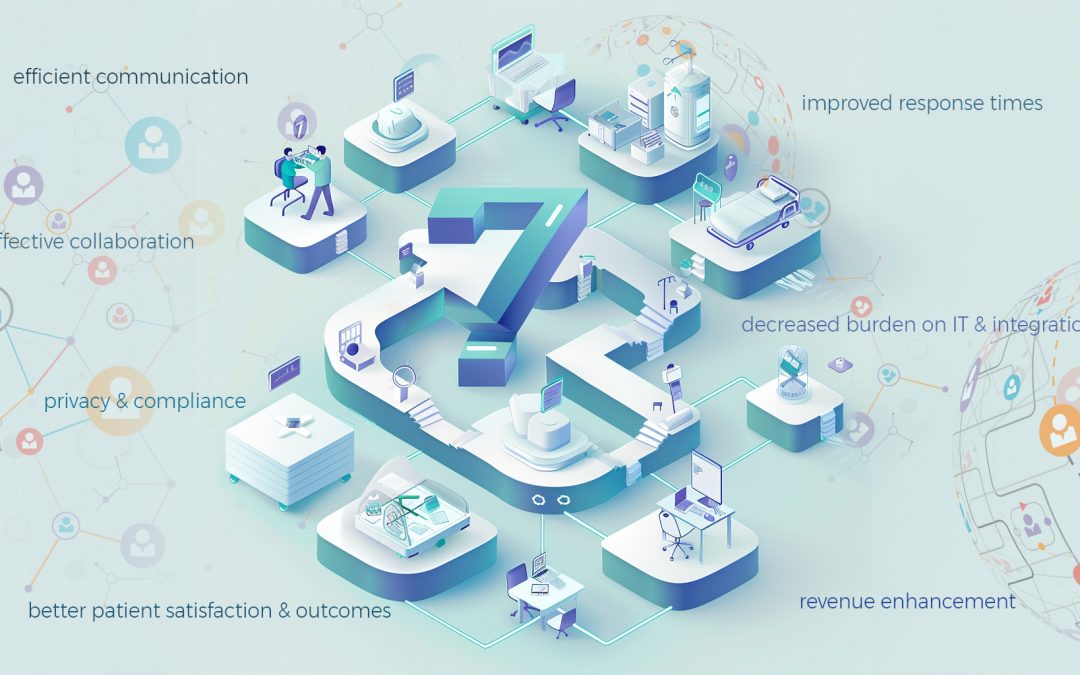Quick Overview: Benefits of Clinical Communication Platforms
Clinical communication platforms help healthcare organizations reduce errors, improve workflows, and deliver better patient care. By centralizing secure messaging, file sharing, and collaboration, they streamline daily operations and strengthen compliance.
- Improve communication and reduce costly miscommunication errors
- Enable faster emergency response and real-time decision-making
- Strengthen HIPAA compliance and protect patient privacy
- Boost efficiency, revenue, and overall patient outcomes
A clinical communication platform empowers healthcare teams to work smarter, respond faster, and provide safer care.
According to the National Health Expenditure Account (NHEA), US healthcare spending was about $13,493 per person in 2022, constituting about 17.3% of the nationwide GDP. Although some out-of-control costs contribute to this, inefficient processes, complicated technology, and clinical communication problems cause financial losses. Plus, unintentional injuries like medical errors are now the third leading cause of death in the US, causing tension and strain between doctor-patient relationships and the reputation of thousands of hospitals and health systems. But is there anything healthcare professionals can do? How can care teams and healthcare organizations protect patients and improve efficiency while decreasing costs? The answer may lie in better communication. Here, we’ll review some of a clinical communication platform’s biggest benefits and long-term outcomes.
What is a Clinical Communication and Collaboration Platform?
While the data can be alarming, these findings have sparked positive changes in how healthcare organizations manage workflow and patient safety. One improvement has been increased team collaboration through communication among clinical workflows. Clinical communication and collaboration platforms (CC&C) are specialized digital tools designed to enhance communication and teamwork among healthcare professionals. These platforms aim to streamline and improve information sharing within healthcare settings, ultimately contributing to better patient care and outcomes.
What Does Secure Messaging and Clinical Communication Software Do?
The primary goal of this software is to improve communication and collaboration while encouraging faster response times for patient care. However, other features can help with almost all aspects of healthcare systems. Some of the most notable features clinical communication platforms provide include:
- Secure messaging systems that are HIPAA-compliant
- Group chats, channels, or forums that can be customized by department or shared with the entire collaborative team
- Interdisciplinary collaboration across specialties and departments
- Custom notifications for healthcare teams and patients
- Protected voice calls between internal care team members or patients
- Video conferencing for telemedicine and telehealth
- Task assignment and tracking
- Overall task management integrated with electronic health records (EHRs)
- Sharing patient records and imaging
- Real-time updates of patient data
- Updates for treatment plans that can be shared between clinical teams
- Automated alerts about abnormal results or patient emergencies
7 Benefits of a Clinical Communication Platform
Innovative technology plays a massive role in improving the healthcare industry. These advancements can help shape the future of healthcare and make the lives of clinicians, doctors, nurses, surgeons, lab technicians, and administrative staff easier. To better understand their impact, here are seven benefits of clinical communication platforms.
1. More Efficient Communication Throughout Healthcare Organizations
Did you know that healthcare-related miscommunication costs $1.7 billion and results in nearly 2,000 fatalities? One study found these numbers after analyzing findings over a four-year period. Clinical communication platforms transform how healthcare professionals interact, reducing the reliance on outdated methods like pagers, faxes, or non-secure messaging apps. These tools allow instant messaging, quick sharing of patient data, and faster decision-making within a clinical setting by centralizing communication into a single, secure platform.
This efficiency can strengthen healthcare delivery, improve workflows, minimize delays, and provide more substantial patient-centered healthcare. The ability to communicate in real-time also reduces the likelihood of miscommunication, especially during patient handoffs, ensuring that vital information is conveyed clearly and promptly.
2. Interconnected Collaboration and Communication Between Different Departments
Ensuring seamless collaboration across various care teams, administrators, patients, and external care partners can be challenging in both small and large healthcare organizations. When it comes to communication, things can get even more difficult. Without a platform capable of secure instant messaging, real-time group communication, and file exchange between all healthcare stakeholders who provide patient care, communication of lab results or treatment plans can take unnecessarily long. Each department is rendered immobile until the baton is passed.
Clinical communication platforms break down these silos by providing a unified communication channel where various teams —such as administrators, nurses, doctors, surgeons, labs, radiologists, home care, and pharmacy—can interact effortlessly. This interconnectedness allows for easy sharing of patient records, lab results, electronic visit verification (EVV), and treatment plans, facilitating coordinated care. By promoting interdisciplinary communication, CC&C platforms ensure that every healthcare provider involved in a patient’s care has access to the same information, leading to more informed decisions and improved patient outcomes.
3. Enhanced Patient Privacy and HIPAA Compliance
Ensuring patient privacy is paramount in healthcare, and non-compliance with regulations like HIPAA can lead to significant legal and financial repercussions. Today’s clinical communication platforms are designed to meet these stringent regulatory requirements. They offer secure messaging, encrypted data transmission, and controlled access to patient information, ensuring that sensitive data is only accessible to authorized personnel and not exposed if a device is lost or stolen. With the right software, information can be securely accessed on any mobile, laptop, tablet, or desktop device.
By automating compliance through these features, healthcare organizations can focus on delivering care without worrying about the potential risks associated with data breaches or non-compliant communication methods.
4. Improved Patient Outcomes and Better Patient Care
The ultimate goal of any healthcare technology is to improve patient outcomes, and CC&C platforms are no exception. Enhancing communication among care teams, these platforms help reduce errors, ensure timely interventions, and allow for continuous patient monitoring.
For example, a hospice nurse can quickly alert the physician and coordinate the hospice care team at once in the event of a critical decline in a patient’s condition through group secure messaging. This collaboration, coupled with audible alerts and notifications, leads to faster response times, which can prolong the patient’s life.
Additionally, inefficient communication is a major drain on homecare agencies. From referrals to intake, e-signatures, care team, patient, and family communication through a secure messaging system led to less time tracking down and completing paperwork and more time on patient care. This led directly to increases in patient volume and revenue.
5. Decreased Response Times for Patient Emergencies
In emergencies, every second counts. When healthcare workers are equipped with a communication platform that serves them, urgent information becomes more accessible and can reach the right people immediately. These platforms expedite the flow of information, whether notifying a trauma team about an incoming patient or alerting a physician to a critical lab result. They incorporate automated alerts, real-time notifications, and priority messaging. These features help reduce response time, making them vital in improving patient survival rates and emergency outcomes, where swift action can mean the difference between life and death.
6. Reduced Strain on IT Infrastructure and Better Access to EHR
Managing the IT infrastructure in a healthcare setting can be complex, especially when dealing with multiple communication systems that may not integrate well. The right communication platform integrates seamlessly with existing electronic health records (EHR) systems, reducing the need for multiple logins or data duplication. This integration simplifies the IT environment, making it easier to manage and maintain. Additionally, by consolidating communication into a single platform, these tools reduce the strain on IT resources, lower maintenance costs, and enhance the overall user experience for healthcare providers.
7. Greater Potential for Revenue
Finally, efficient communication not only improves patient care but also positively impacts the finances of healthcare organizations. By reducing errors, improving workflow efficiency, and enhancing patient satisfaction, clinical communication platforms help contribute to better financial performance.
For example, faster response times and more coordinated care can lead to shorter hospital stays and fewer readmissions. Additionally, these platforms help avoid costly fines and legal issues by ensuring compliance with regulatory standards. Ultimately, the benefits of a robust communication platform translate to cost savings and revenue generation over the years.
Long-Term Outcomes of Efficient Communication Solutions
Regardless of the type of healthcare organization you’re in, effective clinical collaboration and communication technology can result in several long-term changes. Some ways that effective care communication software can influence your organization include:
- Improved Patient Safety — By ensuring that critical information is communicated promptly and accurately, CC&C platforms can reduce errors and improve patient outcomes.
- Increased Revenue and Efficiency — These platforms reduce hospital readmissions, onboarding time, and time swapping screens and apps while increasing patient volume, staff satisfaction, and revenue. Time spent on non-value-added tasks, such as waiting for callbacks or searching for information, is now allocated to patient care.
- Better Coordination — Enhances teamwork and ensures everyone involved in a patient’s care is on the same page.
- Compliance — Helps healthcare organizations maintain compliance with regulatory requirements related to data security and patient privacy.
How to Choose the Right Clinical Communication Platform
Although several “secure” messaging platforms are advertised online or in your phone’s app store, not all can provide the necessary security for handling medical records and patient information. The most important thing to look for when finding a solution to enhance healthcare communications is a truly secure network up to HIPAA standards. That’s why Buzz offers a comprehensive HIPAA-compliant platform that provides all key communication and collaboration tools in one easy-to-use app. This allows an organization to enjoy all the benefits of clinical communication platforms while reducing risk.
Buzz is the most powerful communication and collaboration application for continuous care coordination. Fully compliant with HIPAA rules and regulations, your patient’s data is private and accessible to only authorized users. Whether consulting with another healthcare provider or the patient, you’ll never need to worry about security. The platform combines the power of voice, text, phone, group collaboration, document sharing and e-signatures, Skyscape’s clinical library, and secure instant messaging app in a fully configurable, HIPAA-secure platform.

